Huracán Ramírez: Difference between revisions
No edit summary |
|||
| (79 intermediate revisions by 20 users not shown) | |||
| Line 1: | Line 1: | ||
== Profile == | == Profile == | ||
This article refers to the wrestler, for the 1953 film, see ''[[Huracán Ramírez (1953)]]''. | |||
<!-- fill in categories from La Arena --> | <!-- fill in categories from La Arena --> | ||
| Line 7: | Line 8: | ||
|name=Huracán Ramírez (Hurricane Ramirez) | |name=Huracán Ramírez (Hurricane Ramirez) | ||
|realName=Daniel García Arteaga | |realName=Daniel García Arteaga | ||
|nicknames= | |nicknames= El Príncipe de Seda (The Silk Prince) | ||
|nameHistory=Buitre Blanco ( | |nameHistory=Buitre Blanco (1950), Chico García (1951), Huracán Ramírez (19 Mayo 1952 - retirement) | ||
|family=[[Catedrático]], [[ | |family=[[Catedrático]], [[El Matematico]] & [[Demonio Rojo (1947)|Demonio Rojo]] (brothers), | ||
|maestro= | [[Dr. Zeta]], [[Rayo Colombiano]], [[Matemático Jr.]], [[Huracán Jr.]] (nephews), [[Axel|Axel El Nieto del Santo]] (son in law); see [[The Garcia Family]] | ||
|maestro= | |||
|birthdate=[[April 9]], [[1926]] - [[Mexico City]] | |birthdate=[[April 9]], [[1926]] - [[Mexico City]] | ||
|obituarydate= | |obituarydate=[[October 31]], [[2006]] | ||
|debut=[[1952]] | |debut=[[May 19]], [[1952]] | ||
|lostmaskto= | |lostmaskto= | ||
|height=5' | |height=5'7"/172 cms | ||
|weight=203 lbs/ | |weight=203 lbs/90 kg | ||
|signatureMoves=[[ | |signatureMoves=[[Huracanrana]], [[Cravate]], [[Tijeras]], [[Patadas de la Tercera]] [[Cuerda cayendo de pie]], [[Patada]] en [[Cascada]] | ||
|titles=[[NWA World Welterweight Title]], [[National Welterweight Title]] (3), [[Northern Middleweight Title]] | |titles=[[NWA World Welterweight Title]], [[National Welterweight Title]] (3), [[Northern Middleweight Title]] | ||
}} | }} | ||
<!-- Bio --> | <!-- Bio --> | ||
== Biography == | |||
== Obituary == | |||
Mexican lucha libre last week lost one of the very last of its “living legends,” legends from the golden ages of wrestling and wrestling movies. Last Tuesday night, Halloween in the USA but in Mexico only fifteen minutes before start of the Mexican “Days of the Dead”, Daniel García Artega, who was the most famous man to wrestle as “El Huracán Ramírez” and one of the five or ten most famous characters in the 73+-year history of lucha libre, was pronounced dead. The cause of death was formally listed as being due to a sudden heart attack he had suffered less than an hour earlier in his Mexico City home and then a second one at the hospital as the physicians were trying to save him. | |||
García was born to Juan García and Encarnación Arteaga de García on April 9th, 1926, the fifth of six boys, in his parent’s bedroom in their house on Calle de Alfarería 55, Colonia Morelos, El barrio bravo de Tepito, in Mexico City. Encarnación came from a family where some of the men had been amateur wrestlers, and most of Daniel’s older brothers eventually became a professional wrestler: (in order of age) Arturo was [[La Pantera Roja]] and later was also “El Catedratico;” Rodolfo wrestled as [[Rudy García]] and Guillermo became [[Demonio Rojo (1947)|Demonio Rojo]]. Juan, the 4th, and Miguel, the 6th, never wrestled. Now, only Miguel survives of the six. | |||
“El barrio bravo de Tepito” was (and is still considered today to be) the tough-guys’ neighborhood of Mexico City, one that in the 1930s and 1940s seemed to be country’s progenitor of fine boxers and martial artists, and that was the type of sport to which Daniel was first attracted - though he also tried ice hockey for several years as a youngster. Unlike his brothers, who by adulthood showed the large limbs and barrel chests associated with boxers and wrestlers, Daniel was very small, and, though not discouraged by his brothers, was nonetheless unable to make a big splash in boxing. However, neither were the brothers, and by the late 1930s and early 1940s, each had gravitated towards Mexican professional wrestling, la lucha libre. | |||
By 1941, Daniel had entered the ring under a mask at “El Buitre Blanco” (The White Vulture), a mask he defended for many years. He also wrestled occasionally later on as “El Chico García,” the “chico” referring to his small stature. But by the early 1950’s, things were in motion that would change the course of Daniel’s career, lucha libre, and Mexican film as well. | |||
In 1952, a man named José “Joselito” Rodríguez, and his son Juan Rodríguez Mas, members of a famous-in-Mexico entertainment family (brother Ismael was an even more famous pop star), began directing a movie with their brother Roberto called “Huracán Ramirez.” The movie was made to capitalize on the suddenly hot trend of wrestling-superheroes-as-action-stars movies. The general idea was to make the character’s name out of a natural disaster but with a common (and macho) Mexican last name. First, the character was going to be called “Huracán López,” but then it was changed to Ramírez to avoid confusion with Carlos [[Tarzán López]], the most popular wrestler in Mexico at the time. | |||
In the movie, a young Mexican man whose father is a luchador decides to follow in his father’s career path by adopting the secret identity of “El Huracán Ramírez,” a masked luchador, and fighting in the ring in spite of his father's wishes to the contrary. | |||
To interrupt briefly, three interesting side notes at this point. First, funding for the movie was made by Jesús Garza out of Guadalajara and his new television company Televicentro - now called Televisa; in fact, Garza actually played a character in this very movie; secondly, Daniel himself appeared in this move as “El Buitre Blanco;” third, some of the more veteran lucha historians are now saying that in fact there was a very brief attempt by one of Daniel’s other three brothers to wrestle under a hood as “El Huracán Ramírez” at the very tail end of the 1940s but that the gimmick was very, very short-lived and did not succeed. | |||
Back to the 1952 movie, though: the title super-hero was played by actor David Silva in all the scenes except those filmed inside wrestling rings and by Spanish actor Eduardo Bonada (who, in an amazing twist of fate, had been recruited to Mexico by Daniel’s brother Arturo) in the wrestling scenes. The movie was a huge success from the day it premiered, and Bonada tried to capitalize on the stardom he had found in this new character by taking himself under the hood to various lucha libre arenas, but he found that he did not like the wrestling side of things and soon just made more “special appearances” than matches, not wanting to hide his well-known movie face under a hood, and eventually, in Juarez, he revealed (in a very non-controversial manner, very straightforwardly and matter-of-fact) that it was he, Bonada, who had been Ramírez, but was now giving up the ghost and moving onto other film projects. | |||
One of the things that came out of this movie was a wrestling move unlike any that had been seen before it. It was to be the signature move of the young flying acrobatic wrestler, and was called “la huracarrana.” That word “huracarrana” (I am told this is the correct perfect Spanish spelling for this word) has two parts – “huraca” for hurricane and “rana” for frog as in leapfrog. “La rana,” a creation of the Mexican wrestler Emilio Charles senior, was a bells-and-whistles-added (flashier) variation of the standard pinning move known in the US as the “victory roll” and debuted in the 1930s. The move is essentially nothing more than leapfrog except one lands on one’s opponent’s shoulder rather than flying over, in essence imitating a frog doing a hop. And “huraca” for Hurricane, obviously. To make this new move “more spectacular” for the movies, the initial leapfrog leap is done with the two opponents face to face, and then the wrestler on top twisting backward, not rolling forward. Two wrestlers based in Monterrey, El [[Bello Kalifa]] (unable to locate real name) and El [[Halcón Suriano]] (Juan José Espinoza Meza, a tiny boy of 14-15 who was the Rey Misterio junior of his day and city), had been doing something pretty much just like the huracarrana (what they were doing really was more of a “Frankensteiner” than anything else seen today) for a couple of years in Monterrey rings, but no one else around Mexico or anywhere else had seen them. Kalifa was hired to work on the film and taught the move to Bonada who used it. A few years later, Daniel García began holding onto his opponent’s legs at the end of the roll and turning the huracarrana from a devastating throw with a percussive effect on the opponent into a pinning combination. | |||
Well, since the character was a huge success but Bonada did not wish to fill the mask and tights more than occasionally, the Rodríguez family (and lucha promoters) then decided to find a luchador to be “Huracán Ramírez” full-time. At various times, men such as [[Fernando Osés]], [[Enrique Llanes]], [[Jean Safont]], Marco Antonio Carta( who wrestled as [[Carta Brava|La Carta Brava]]), and Rogelio de la Pez (who wrestled as La [[Sombra Vengadora]]), all famous names in lucha libre history in Northern Mexico of the mid-20th century, filled the shoes of the character either in the ring. In the movies, actors such as David Silva, Pepe Romay, Freddy "Pichi" Fernandez, and Marco Antonio Arzate were Huracán in all the non-wrestling scenes. Still, something was not right. In addition, the commissioners of the lucha commissions in the various 32 jurisdictions (led as always by the Distrito Federal commission) of Mexico were very unhappy with the fact that, like a Santa Claus on every street corner in December, there were several Huracán Ramírezes wrestling each night around the country. | |||
Another side note, many movie critics, looking back, consider the Huracán Ramírez movies to be the most time-specific of all the wrestler-superhero movies, meaning they don’t translate out of their time period so well as some of these other B movies did. Also, in the movies, Ramírez is much more passive than a Santo or a Blue Demon are in their movies, almost reacting to events around him rather than being at the center each time, and also acting more as part of an ensemble than out front leading the way. | |||
In 1953, there were held, very quietly, tryouts for people to play the character full-time on the road as a luchador. Among the finalists were Octavio Gaona junior, Memo Rubio, Marco Antonio Carta, and Daniel García Artega. There was a (sort-of) tie vote! Joselito Rodríguez picked Daniel for the role (Daniel was the best luchador of those in the final group being considered, though at first he was not interested in the character), but Juan chose Marco Antonio. Dad won, and soon, Daniel debuted to a sellout crowd in León city, Guanajuato state, México, before fans unaware that he had never played the part in the movies. Later that year, Daniel was introduced formally in a singles match at the old “[[La Arena Nacional]]” (forerunner of today’s La Arena Mexico) in Mexico City against El [[Medico Asesino]]. | |||
Perhaps the most memorable thing about El Huracán Ramírez was his style. Noted lucha historian José Fernández described it as “Sayama-like.” There were guys with better actual execution, but very few had his grace and uniqueness. You could tell a Huracán dropkick from a mile away. Sayama, Mil Mascaras, Great Sasuke, he's one of those guys with a very distinct execution style that made him stand out from the pack.” | |||
Daniel wrestled as his name would suggest, like a hurricane, and his unique style was not to the liking of the wrestling purists - shades of [[Rey Misterio Jr.|El Rey Misterio junior]] and [[Mistico|El Mistico]]! He was faster, had a more aerial and spectacular style, based more on acrobatic flying moves (like the huracarrana) and less on the application of holds and counter-holds on the mat; and, just like today, the most rabid fans began to shout “El Huracán Ramírez does not know to wrestle.” Daniel decided to shut the fans up and immediately started doing only matwork, but soon the promoters had little talks with Daniel, saying “stop that, what the fans want to see is the new, the unique, the Hurricane.” | |||
Daniel became so good at wresting this style, and it got over so well, that reality surpassed fiction and the fictional film character became more well-known that his counterpart movie super-hero. He was so smooth he was called “The Silk Prince” in the ring. Ovaciones described as uniquely fluid, both solid in matwork and flying. By the early 1960’s, Daniel had became so inseparable with the character that there could be no other choice to lay “El Huracán Ramírez” in the remaining movies, and Daniel starred in at least five such movies: | |||
* [[El Misterio De Huracán Ramírez (1962)]] | |||
* [[El Hijo De Huracán Ramírez (1965)]] | |||
* [[La Venganza De Huracán Ramírez (1967)]] | |||
* [[Huracán Ramírez y La Monjita Negra (1972)]] | |||
* [[De Sangre Chicana (1973)]] | |||
The "Huracán Ramírez" character appeared in three additional films: | |||
* [[Torito Puños de Oro (1979)]] | |||
* [[Torito De Tepito (1982)]] | |||
* [[Huracán Ramírez Contra Los Terroristas (1989)]] | |||
Daniel definitely did not play "Huracán Ramírez" in the final movie, and in a 1997 interview he also indicated he did not don the mask in the two "Torito" films, which were chiefly about a boxer (played by Pedro Infante Jr.). | |||
For Daniel, the period of 1962-1987 was really filled with more fame and success in the ring than on the screen. He feuded only with the top names and workers of his time, including [[El Santo]] (especially before Santo’s 1962 face turn), [[Medico Asesino|El Medico Asesino]], [[Bulldog (60s)|El Bulldog]], [[Ray Mendoza]], [[El Solitario]], [[El Enfermero]], [[Karloff Lagarde]], [[Rene Guajuardo|René “Copetes” Guajuardo]], [[Coloso Colosetti|Elio “El Coloso” Colosetti]], [[Caballero Tigre|El Caballero Tigre]], [[Dorrell Dixon]], [[El Verdugo]], [[Murciélago Velázquez|El Murciélago Velázquez]], [[Espectro III|El Espectro III]], and [[Espanto III|El Espanto III]]. | |||
He won his share of major matches, too, never losing his mask or hair in the ring. On June 12th, 1964, El Huracán Ramírez defeated El Espectro III (Luis Miguel “Miguelito” Vázquez Bernat) in a caballera contra caballera match. On January 12th, 1965, El Huracán Ramírez defeated “Curly” Ruíz to win the [[Mexican National Welterweight Championship]]. On August 5th, 1965, El Huracán Ramírez defeated Karloff Lagarde to win the [[NWA World Welterweight Championship]]. On April 26th, 1968, at La [[Arena Mexico]], El Huracán Ramírez defeated El Enfermero (Antonio Navarro Camargo) in a caballera contra caballera match. He also defended his mask successfully against Moloch, El Escorpión I (Roberto “El Carnicero” Grimaldo), Los Hermanos Muerte, El Bello Greco, El Cadaver II, La Sombra, and El Halcón De Oro. His greatest success in tag teams were with El Santo or with the obese Tonina Jackson as a Mutt-and-Jeff-mismatch sort of team. | |||
And, inspired by his experiences as a teenager, especially with his boxing background, and always wanting to show his bona fides to doubters, Daniel was the first Mexican man to engage in a “boxer versus wrestler” match. On May 5th, 1963, wrestling with his mask in a match that was later found out to be a worked match in Bogotá, Colombia, Daniel the wrestler defeated the French boxer called “El Tigre Francés.” | |||
Like many of the Guadalajara-based wrestlers of the 1950’s, and those that had come under the sway of Jesús Garza with Televicentro, García had no particular attachment to EMLL head Salvador Lutterroth González. When [[Francisco J. Flores]] decided in late 1974 to break away form EMLL and form a new promotion (LLI, though it would be eventually much better known as UWA because, to make a long story short, those were the initials under which its title belts were promoted), one of the first wrestlers that Flores secured for his new promotion was El Huracán Ramírez. | |||
Ramirez took his fame to other countries, from South America to Japan. He wrestled in Japan (he claims several times against Antonio Inoki), the United States, Cuba, Guatemala, Panamá, Bolivia, Colombia, and Ecuador, among others, as well as in Europe, and some still say that in Ecuador and Bolivia he was a bigger star than El Santo. Eulalia Fernández de García, the wife of the late luchador, is a very famous person in her own right in more “respectable” society. She is the well-known ex-Secretary of the Bolivian Embassy in Mexico City, and was part of an international incident when, after 18 years of employment at the Bolivian Embassy, was let go January 23rd, 2004, without cause, just months before she became eligible for a large retirement and pension. (And in a really odd twist to this story and that footnoted addendum, today, the Bolivian Embassy sent flowers and a formal letter of condolences to Eulalia at the funeral home!) There was quite the protest in Mexico City about it at the time, though the Bolivian government ended up never changing their minds (a Google search will allow the readers to explore this controversy in greater detail). She had been married to Daniel García for 37 years at the time of his death. El Huracán Ramírez and Eulalia Fernandez met on one of the first trips that he made to the country. 1969 was when the wrestler first flew to Bolivia, right after the September 26, 1969 tragedy where a DC-6, in which the Bolivian First Division soccer team The Strongest was traveling, crashed in Viloco, killing all 25 members of that soccer team on board that plane, as well as 49 others on the plane. (Note: This is NOT the more famous crash that led to books and movies - that was October 13, 1972, when a Fairchild F-227 airplane carrying a rugby team from Uruguay crashed in Chile’s Andes mountains, causing on ordeal for the survivors lasting 72 days, even including cannibalism, as related in the movie Alive!) | |||
Shocked by the tragedy, Daniel made a pair of trips to Bolivia, not charging anything for his services other than transportation, room, and board, and presented himself as a four-belt champion (which he was, Daniel was the first man to hold four World or National Championships simultaneously in Mexican wrestling history) there to wrestler benefit of the relatives of the tragedy. A bit later, the soccer team honored El Huracán Ramírez and at that ceremony. Daniel was introduced to Eulalia’s father, the father of the woman would be his future wife. Eulalia Fernandez did not remember each and every detail, but remember that Bolivia took to El Huracán Ramírez like a duck to water. | |||
Famed old-time wrestler [[Bobby Lee]] (Carlos Alvarado), interviewed in a Mexican newspaper the day after Daniel’s death, remembering Daniel, brought to mind a tour the two of them took with [[Aníbal]] and [[César Valentino]] of Panamá and Bolivia in the 1980s, and how they the almost died when one of the chains snapped in the elevator in which they were riding, and remembered how Daniel had gone to bat for them when a promoter tried to stiff them with a low payoff. | |||
By the mid-1980’s, though, Daniel was past 55 and heading for 60; he wanted to do as El Santo and The Blue Demon had done, and pass the name along to a son. (We’ll skip over the question of to whom Daniel would have passed along the name if he could have – that is a {long} story for another time and day.) However, Daniel did not own the rights to the name or the likeness of “El Huracán Ramírez.” It began when Jose Rodriguez Mas, the official rights-holder, and Daniel, who at that time were very close friends, decided to re-create a small photo-montage-style comic book featuring El Huracán Ramírez, a gimmick that hold sold hundreds of thousands in the 1950s and 1960, and was similar to a very popular one of the time of “El Santo.” Rodríguez got cold feet as start-up costs were severe, so Daniel agreed to work at all the film shoots and publicity without pay until the initial (start-up) expenses had been recouped. However, after the little comic book became a big hit, Daniel went to discuss money, and Rodríguez refused to pay anything, and things got so heated that Rodríguez, as rights-owner, threatened to legally bar Daniel from using the name or character in any way. | |||
Daniel responded by doing something that had almost never been done before, and then only on a smaller scale by undercard wrestlers. In 1987, he walked into the ring at WWA’s El Auditorio de Tijuana ring, at the side of [[Mano Negra]] and [[Huracán Jr.]] to wrestle [[El Signo]], [[El Texano]], and [[Negro Navarro]]. After the match, walked to the center of the ring and unmasked at the side of Mora, showing his face and saying goodbye. | |||
On Sunday, February 5th, 1987, he walked into the ring at UWA’s El Toreo de Cuatro Caminos bull ring in Naucalpan city, México state, México, at the side of [[Tinieblas]] and [[El Hijo del Santo]] to wrestle El [[Brazo de Oro]], El [[Brazo De Plata]], and [[El Brazo]]. After the match, Daniel, who had been served papers by Rodríguez Mas right before the match, walked to the center of the ring, condemned the character “El Huracán Ramírez” to hell, and walked out of the ring, never to wrestle again. | |||
And, when even this failed to make Rodríguez Mas share profits with Daniel, and when Rodríguez Mas informed Daniel that he wanted a man in his 20s, not in his 60s, to be the working character now, both in the ring and on the screen, Daniel responded that El Huracán Ramírez was a character like a James Bond or a Tarzan, without age, a superhero for all generations. Daniel returned to the ring the very next February 5th, 1988, as frustrated as any of his friends can ever recall him (Televisa lucha announcer [[Arturo Rivera]] told a great story about this last week when interviewed at the funeral home, now archived on the Televisa esmas.com web site, also noting how La Parka and El Mistico today have similar masked charisma) walked to the ring in one of the ultra-chic and ultra-expensive suits as was his idiom, and voluntarily unmasked, showing the world his face without losing his mask in the ring – something that had only been done once or twice before ever in Mexico, and then only by very small-time wrestlers in tiny arenas. Daniel had ensured that everyone who came after him, anyone in any way identified with the “Ramírez” line, would never succeed, even very good workers such as Rubén García (as “[[Huracan Ramirez Jr.|El Huracán Ramírez junior]]”) and Celso Reyes Daza (as [[Ciclón Ramírez]], who was actually an excellent worker), made only minor waves in the lucha world trying to capitalize on the name. | |||
Rodríguez Mas tried. Even today, 19 years after Daniel last wrestled, there are “Nuevo Huracán Ramírezes” and “Huracán Ramírez juniors,” and “Huracán Ramírez IIs” from time to time all over Mexico, mostly in the little neighborhood arenas. Even today, promoters try and try, but the name and the gimmick were killed many years ago. | |||
By the way, taking his mask off and revealing his face also startled almost all of his friends and non-immediate family members, as he had guarded from 1953 tom 1987 very carefully his privacy, his identity, and what he really did in life. Supposedly, of all of the biggest stars in Mexico, Daniel guarded his real identify more carefully than all of them. And, even today, the lucha libre community has never fully come to grips with the chicken-and-egg question whether, to simplify, the man makes the mask or the mask makes the man. | |||
Mentally, these actions took quite the toll of Daniel, and he had begun to escape by drinking, as he had done to escape the wear and tear of the pounding as he got older in life (by his retirement, he was already past 60). However, friends convinced him off the wagon, for a year, which became five, which became the rest of his life sober. By his own account, from the late 1960’s to 1975, he went on and off the wagon, sometimes on drinking binges that would last two solid weeks. Finally, a doctor and some friend convinced him to go to AA, and, in 1979, he claimed to have taken his last drink. | |||
It is quite true that Daniel did smoke like a chimney though, and his famous pipes (extra-long, and the bowl was painted like his blue wrestling mask) were, except for masks, the top-selling novelty gimmick in Mexico for quite a few years in the 1960s. | |||
In fact, lucha historians speculate today (in large part because of Daniel’s public admissions and interviews around the edges of this story) that Daniel really started drinking during the Latin America tours. It is believed generally that during that era, most wrestlers in Bolivia were addicted to coke, as were even some of politicians with whom Daniel would socialize due to his wife's ties. Daniel claimed he never tried cocaine, but did say privately to many people that he would drink tons of whiskey, until joining Alcoholics Anonymous in 75. He first talked about his alcohol addiction during an interview published in Mexico City newspaper La Jornada published in December 2000, and later in his infamous “Tómbola” appearance. (By the way, and for whatever it is worth, Daniel would also claim privately that during this time, he met many high flying politicians who greased the way for massive cocaine shipments from Bolivia to the US.) | |||
Ah, “Tómbola!” As related by Ernesto Ocampo in this week’s Super Luchas magazine: “In 2001, Daniel revived the character in the fortunately non-renewed program “Tómbola,” where the mission of the interviewers was to throw off the interviewee with sarcastic questions, including raising indiscreet questions and things of bad taste, and ratcheting things up until the interviewee was thoroughly tarred. Well, the talk turned to alcohol, and Daniel made some very serious statements regarding his own alcoholism, which lead to quite the uproar in the media. He made an error in mentioning drug use, not just alcohol use, among wrestlers. He even brought up in this regard names of wrestlers who had passed away. Suddenly, as it is custom in many areas, lucha libre was beset with negative commentaries, and for much of these Daniel took the blame personally, but to me, these declarations were those of a serious man who only said the truth in a mistaken place. Finally, The Blue Demon junior, one of the ones greatly affected by this (because his father was one Daniel had mentioned along these lines), like a true gentleman excused the unfortunate commentaries, understanding that Daniel had been cornered by these absurd “journalists” due to his age and thus, little by little, we all understood the situation by which Daniel had made such declarations.” Sound familiar these days? | |||
Speaking of friends, it is hard to overstate Daniel’s close friendship with El Santo (Rodolfo “Ruddy” Guzmán Huerta”). El Santo was the most frequent partner of El Huracán Ramírez, and in trios, El Rayo De Jalisco often joined them - three natural welterweights who were surely three of the five most charismatic masked men in lucha libre history. Indeed, it was this trio who was wrestling at El Toreo against Los Misioneros de la Muerte (El Signo, El Texano, and El Negro Navarro) in 1981 when El Santo had his first heart attack in the ring, and the quick actions of El Huracán Ramírez were helpful in Santo’s not dying in the ring. When El Santo died in 1984, Daniel Garcia was one of Santo's pall bearers. In fact, when “El Hijo del Santo” (Jorge Guzmán Rodríguez) filmed a roughly biographical called “La Leyenda (Del Santo),” Daniel García Arteaga played the role of “El Santo!” | |||
Oddly enough, one man that Daniel García virtually never wrestled or traveled with was his nephew, the very famous wrestler “[[El Matemático]]” (Rodolfo García Pedrosa), who was one of the most technically proficient lighter-weight wrestlers ever in Mexico, and is at age 66 still alive to this very day and has wrestled at least two matches of which we are aware in the last 18-24 months. | |||
By the decade of the 2000s, Daniel had begun to feel the consequences of his age and his matches throughout his body. He fought through several back surgeries; he had four herniated discs and suffered from a narrowing of lumbar channel that forced him to take analgesics every few hours every day of his life. | |||
And suddenly, the end came on Halloween night, and end that left his wife Eulalia Fernandez crying and sorrowful. The body of the legendary fighter was transferred to La Agencia Funeraria García López at the corner of Avenida General Prim and Calle Versailles in Mexico City ’s La Colonia Cuauhtémoc in the center of the Mexican capital, where her widow received condolences for the death of her beloved Daniel. “This is very painful because it was sudden, a massive infarction at approximately 11:00 last (Tuesday) night; thanks to God he went away calm,” said Doña Eulalia with tears in her eyes in an interview published throughout Mexico within 24 hours of the death. The widow of “The Silk Prince” commented that fortunately her husband received a great amount of tributes late in life and she does not yet know whether anyone else (wrestling or film) will do some other honoring of him after his passing. She said, “The nicest thing is that all their tributes were made while he was still alive to enjoy them; months ago in a function promoted by Martha Villalobos, she gave recognition to him for his 80 years of life, which he celebrated this past April.” Daniel “will be appreciated by children who never saw him fight,” said Mrs. Fernandez, very moved in recalling these moments. “I thank the fans very much for their support, the fans who always remembered him – all the time they approached him to request autographs and to take photos with him!” | |||
In 2003, the government office SOCLE was going to do a huge tribute to El Huracán Ramírez, but it never got off the ground. Famous clown Brozo invited Ramírez and the wrestler Axel, who was and still is Daniel’s son-in-law, to try to drum up support for this major honor, but it never came about. | |||
Many family and friends attended the funeral service on November 1st, 2006, including [[Canek]], [[Tinieblas]], [[Dorrell Dixon]], [[El Coloso Colosetti]], and [[Axxel|Axel]]. Among them was the man who wrestles as “Axel,” a grandson of El Santo and married to Karla (spelled “Carla” in some places) García Fernández, the younger daughter of Daniel García “El Huracán Ramírez.” Axel said through tears after the service, “He was the best friend of my grandfather, I can not believe he has passed away, he was my father-in-law, my padrino, and he always treated to me like the son he never had, grabbing me by the nape of the neck - I will forget his affection and his advice,” Axel said in a difficult voice and through some tears. “During his 36 years as wrestler, he left an unforgettable trail, and his move ‘la huracarrana’ is imitated by many, but his was really the only one. Now he will meet again with Santo and Blue Demon. He always gave me great advice; he taught to me that one must give the public everything. Now he will help me from on high - we will fight as a trio now – my grandfather, my father-in-law, and me.” | |||
The body of the man in the mythical mask, star of the cinema in the 1950’s, 1960’s, 1970’s, and 1980’s, was cremated at 11:00 a.m. CST on Thursday, November 2nd, 2006, and his ashes will be deposited in the church of Jesus Christ Crucificado, in La Colonia Avante, between Avenue Miramonte and Avenue Viga, in La Delegacióm Coyoacán, in a ceremony to be held later Saturday afternoon, November 11th, 2006. In addition to his wife Eulalia and his brother Miguel, Daniel is survived by his two daughters, Karla and Sandra. | |||
The last of the wrestling-movie super-heroes is now gone, save perhaps Mil Mascaras, age 67 or 68 himself now, and one who really came at the very end. An era passes away quietly now, life moves forward, and so do we, never to step into the same river again. | |||
== older Biography == | |||
<font face="Verdana">This profile is going to be a bit different than most others you can find on this site because while the others are biographies about a certain wrestler, this one is a bio about a character, even though it will also be mostly based around the man that made the character popular, Daniel García. | <font face="Verdana">This profile is going to be a bit different than most others you can find on this site because while the others are biographies about a certain wrestler, this one is a bio about a character, even though it will also be mostly based around the man that made the character popular, Daniel García. | ||
| Line 48: | Line 146: | ||
After the original one unmasked, there has been literally dozens of different wrestlers that have put on the Huracán mask... but none of them have even been 1/10th as popular as the original one.</font> | After the original one unmasked, there has been literally dozens of different wrestlers that have put on the Huracán mask... but none of them have even been 1/10th as popular as the original one.</font> | ||
<br clear=all> | |||
== Luchas de apuestas record == | |||
{{astart}} | |||
{{aline|??/??/??|hair|[[Huracán Ramírez]]|[[El Gran Davis|Gran Davis]]|unknown}} | |||
{{aline|??/??/??<ref name="Lucha Libre 102">Lucha Libre 102</ref>|mask|[[Huracán Ramírez]]|[[El Vampiro (Ramon Montes)]]|Guatemala}} | |||
{{aline|??/??/??<ref name="Lucha Libre 102">Lucha Libre 102</ref>|mask|[[Huracán Ramírez]]|[[El Chacal (Ray Duran)]]|Guatemala}} | |||
{{aline|??/??/??<ref name="Lucha Libre 102">Lucha Libre 102</ref>|mask|[[Huracán Ramírez]]|[[El Zorro (Ray Tarto)]]|Colombia}} | |||
{{aline|??/??/??<ref name="Lucha Libre 102">Lucha Libre 102</ref>|mask|[[Huracán Ramírez]]|[[Penado 14 (Tony Fusary)]]|Bogota}} | |||
{{aline|??/??/??<ref name="Lucha Libre 102">Lucha Libre 102</ref>|mask|[[Huracán Ramírez]]|[[La Cobra]]|Venezuela}} | |||
{{aline|??/??/??<ref name="Lucha Libre 102">Lucha Libre 102</ref>|mask|[[Huracán Ramírez]]|[[La Bestia de San Juan]]|Guatemala}} | |||
{{aline|??/??/??<ref name="Lucha Libre 102">Lucha Libre 102</ref>|mask|[[Huracán Ramírez]]|[[Fantasma de Quetzaltenango]]|Guatemala}} | |||
{{aline|??/??/??<ref name="Lucha Libre 102">Lucha Libre 102</ref>|mask|[[Huracán Ramírez]]|[[El Maldito (Colombia)]]|Colombia}} | |||
{{aline|??/??/??<ref name="Lucha Libre 102">Lucha Libre 102</ref>|mask|[[Huracán Ramírez]]|[[Hercules Negro]]|El Salvador}} | |||
{{aline|??/??/??<ref name="Lucha Libre 102">Lucha Libre 102</ref>|mask|[[Huracán Ramírez]]|[[Lobo de Gallcia]]|Colombia}} | |||
{{aline|??/??/??<ref name="Lucha Libre 102">Lucha Libre 102</ref>|mask|[[Huracán Ramírez]]|[[Mr. X (Tony Garibaldy)]]|Colombia}} | |||
{{aline|??/??/??<ref name="Lucha Libre 102">Lucha Libre 102</ref>|mask|[[Huracán Ramírez]]|[[Mr. X (?)]]|[[Mexicali]]}} | |||
{{aline|??/??/??<ref name="Lucha Libre 102">Lucha Libre 102</ref>|mask|[[Huracán Ramírez]]|[[Corsario Negro (Tony Navarro)]]|[[Mexicali]]}} | |||
{{aline|??/??/??<ref name="Lucha Libre 102">Lucha Libre 102</ref>|mask|[[Huracán Ramírez]]|[[Popeye Franco|Silver Fox]]|[[San Salvador]]}} | |||
{{aline|??/??/??<ref name="Lucha Libre 102">Lucha Libre 102</ref>|mask|[[Huracán Ramírez]]|[[Halcón de Oro I|Halcón de Oro]]|La Paz, Boliva}} | |||
{{aline|??/??/??<ref name="Lucha Libre 102">Lucha Libre 102</ref>|hair|[[Huracán Ramírez]]|[[El Clelon]]|Peru}} | |||
{{aline|??/??/??<ref name="Lucha Libre 102">Lucha Libre 102</ref>|hair|[[Huracán Ramírez]]|[[Carnicero Grimalado]]|Ciudad Juarez}} | |||
{{aline|??/??/??<ref name="Lucha Libre 102">Lucha Libre 102</ref>|hair|[[Huracán Ramírez]]|[[Manuel Robles]]|Mexicali}} | |||
{{aline|??/??/??<ref name="Lucha Libre 102">Lucha Libre 102</ref>|hair|[[Huracán Ramírez]]|[[El Maldito]]|Colombia}} | |||
{{aline|??/??/??<ref name="Lucha Libre 102">Lucha Libre 102</ref>|hair|[[Huracán Ramírez]]|[[Bobo Salvaje]]|San Salvador}} | |||
{{aline|??/??/??<ref name="Lucha Libre 102">Lucha Libre 102</ref>|hair|[[Huracán Ramírez]]|[[Chino Ho Chow]]|Ciudad Juarez}} | |||
{{aline|??/??/??<ref name="Lucha Libre 102">Lucha Libre 102</ref>|hair|[[Huracán Ramírez]]|[[Oro Negro]]|Guadalajara}} | |||
{{aline|[[1945]]/[[02/21]]|hair|[[Huracán Ramírez]]|[[Wolf Rubinsky]]| ¿?}} | |||
{{aline|[[1955]]/[[06/14]]|mask|[[Huracán Ramírez]]|[[Moloch]]|Arena Coliseo - Mexico City}} | |||
{{aline|[[1959]]/??/??|mask|[[Huracán Ramírez]]|[[Halcón Dorado]]|Peru}} | |||
{{aline|[[1962]]/08/??|hair|[[Huracán Ramírez]]|[[Carnicero Grimaldo]]|Guatemala}} | |||
{{aline|[[1964]]/[[06/12]]|mask|[[Huracán Ramírez]]|[[Espanto III]]|Arena México - Mexico City}} | |||
{{aline|[[1965]]/[[12/03]]|mask|[[Huracán Ramírez]]|[[Carnicero Grimaldo|The Scorpio]]|[[Arena México - Mexico City]]}} | |||
{{aline|[[1968]]/[[04/26]]|mask|[[Huracán Ramírez]]|[[El Enfermero]]|Arena México - Mexico City}} | |||
{{aline|[[1972]]/06/??|mask|Huracán Ramírez|[[El Gran Davis|La Tarántula]]|Guatemala}} | |||
{{aline|[[1974]]/[[01/27]]|hair|Huracán Ramírez|[[Delfin]]|Tuxtla Gutierrez, Chiapas}} | |||
{{aline|[[1974]]/[[04/29]]|hair|Huracán Ramírez|[[Espectro I]]|Pachuca - Hidlago}} | |||
{{aline|[[1974]]/[[07/24]]|mask|Huracán Ramírez|[[Blue Angelo]]|Arena Bravo - Mexico City}} | |||
{{aline|[[1975]]/[[03/30]]|mask|[[Huracán Ramírez]]|[[Cadaver II]]|Tlalnepanta}} | |||
{{aline|[[1975]]/[[07/16]]|mask|[[Huracán Ramírez]]|[[La Sombra (70s)]]|Mexico City}} | |||
{{aline|[[1975]]/[[07/29]]|hair|[[Huracán Ramírez]]|[[El Greco]]|Gimnasio Benito Juárez - Cuautitlán, Mexico St.}} | |||
{{aline|[[1978]]/[[09/17]]|masks|[[Rayo de Jalisco]] & Huracán Ramírez|[[Los Hermanos Muerte]] [[Hermano Muerte I|I]] & [[Hermano Muerte II|II]]|unknown}} | |||
{{aline|[[1980]]/[[12/21]]|hair|[[Huracán Ramírez]]|[[El Signo]]|[[Toreo de Cuatro Caminos]]}} | |||
{{aline|[[1988]]/[[08/01]]|mask, hair|[[Huracán Ramírez]]|[[Super Maquina Jr.]]|[[Plaza de Toros Valente Arellano]], [[Torreón]], [[Coahuila]]}} | |||
{{aend|}} | |||
== Gallery == | == Gallery == | ||
{{Gallery||name=BUITRE BLANCO$20copia.jpg|caption= As Buitre Blanco}} | |||
< | {{Gallery||name=CHICO GARC A$20copia.jpg|caption= As Chico Garcia}} | ||
{{Gallery||name=Huracan2006.jpg|caption=Daniel Garcia, 2006}} | |||
{{Gallery||name=DANIEL.JPG|caption=}} | |||
{{Gallery||name=DONDANIEL.JPG|caption=Unmasked}} | |||
{{Gallery||name=E8d52f63-61d0-4545-b69b-d2e9137a8f8a.jpg|caption=[[El Santo]], [[Luis Spota]], [[Huracan Ramirez]], [[Black Shadow]]}} | |||
{{Gallery||name=Daa1938f-8958-4647-8315-4fee3fd346c9.jpg|caption=}} | |||
{{Gallery||name=MUNDIAL WELTER$20copia.jpg|caption=as [[Mexican National Welterweight Championship|National Welterweight Champion]]}} | |||
{{Gallery||name=TETRACAMPEON.jpg|caption=four belt champion}} | |||
{{Gallery||name=Santos_Huracanes!!!.jpg|caption=w/[[El Santo]]}} | |||
{{Gallery||name=HR Licencia 1956.jpg|caption=1956 wrestler license}} | |||
{{Gallery||name=HR Licencia 1984.jpg|caption=1984 wrestler license}} | |||
<Br clear=all> | |||
{{Gallery||name=HR ELEFANTE.JPG|caption=vs Elephant}} | |||
{{Gallery||name=HR_TIJERAS.JPG|caption=}} | |||
{{Gallery||name=HR RING Y CAPA.jpg|caption=}} | |||
{{Gallery||name=HR PATADAS.JPG|caption=}} | |||
{{Gallery||name=ESPECIAL HR GUERREROS DEL RING 1a PARTE.JPG|caption=}} | |||
{{Gallery||name=HR PATADAS ESPECTRO.jpg|caption=}} | |||
{{Gallery||name=HR GUADALUPE.JPG|caption=}} | |||
{{Gallery||name=HR EN HOMBROS.jpg|caption=}} | |||
{{Gallery||name=HR EN HOMBROS CAPA.jpg|caption=}} | |||
{{Gallery||name=HR & CANTINFLAS.jpg|caption=}} | |||
{{Gallery||name=Huracanunmasked.jpg|caption= Unmasked @ Tijuana}} | |||
{{Gallery||name=Huracanunmasked2.jpg|caption=Unmasked @ Tijuana 2}} | |||
<br clear=all> | |||
{{Gallery||name=huracanapuestas.png|caption=list of apuesta wins, from [[Lucha Libre (magazine) 102]]}} | |||
{{Gallery|name=Huracan multiple champ.jpg|caption=}} | |||
{{Gallery|name=144390736_3706179232762853_3691249442820471960_n.jpg|caption=}} | |||
{{Gallery|name=244739693_2077722035724283_6399319796103665980_n.jpg|caption=}} | |||
{{Gallery|name=250754115_302174048433175_5933440869651035562_n.jpg|caption=}} | |||
{{Gallery|name=276124240_3217490605154932_8426778633158137937_n.jpg|caption=}} | |||
[[Category:Mexican wrestlers]] | [[Category:Mexican wrestlers]] | ||
[[Category:Deceased wrestlers]] | |||
[[Category:Former LLI/UWA wrestlers]] | |||
[[Category:La Arena bios]] | |||
Latest revision as of 23:02, 24 August 2022
Profile
This article refers to the wrestler, for the 1953 film, see Huracán Ramírez (1953).
| Huracán Ramírez (Hurricane Ramirez) | |||||||||||||||||||||||||||||
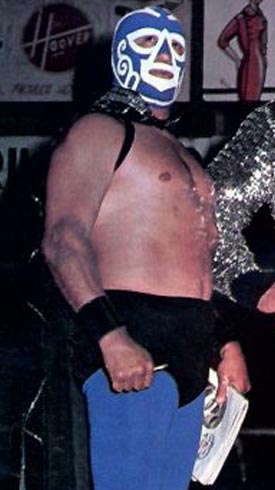 |
|
||||||||||||||||||||||||||||
Obituary
Mexican lucha libre last week lost one of the very last of its “living legends,” legends from the golden ages of wrestling and wrestling movies. Last Tuesday night, Halloween in the USA but in Mexico only fifteen minutes before start of the Mexican “Days of the Dead”, Daniel García Artega, who was the most famous man to wrestle as “El Huracán Ramírez” and one of the five or ten most famous characters in the 73+-year history of lucha libre, was pronounced dead. The cause of death was formally listed as being due to a sudden heart attack he had suffered less than an hour earlier in his Mexico City home and then a second one at the hospital as the physicians were trying to save him.
García was born to Juan García and Encarnación Arteaga de García on April 9th, 1926, the fifth of six boys, in his parent’s bedroom in their house on Calle de Alfarería 55, Colonia Morelos, El barrio bravo de Tepito, in Mexico City. Encarnación came from a family where some of the men had been amateur wrestlers, and most of Daniel’s older brothers eventually became a professional wrestler: (in order of age) Arturo was La Pantera Roja and later was also “El Catedratico;” Rodolfo wrestled as Rudy García and Guillermo became Demonio Rojo. Juan, the 4th, and Miguel, the 6th, never wrestled. Now, only Miguel survives of the six.
“El barrio bravo de Tepito” was (and is still considered today to be) the tough-guys’ neighborhood of Mexico City, one that in the 1930s and 1940s seemed to be country’s progenitor of fine boxers and martial artists, and that was the type of sport to which Daniel was first attracted - though he also tried ice hockey for several years as a youngster. Unlike his brothers, who by adulthood showed the large limbs and barrel chests associated with boxers and wrestlers, Daniel was very small, and, though not discouraged by his brothers, was nonetheless unable to make a big splash in boxing. However, neither were the brothers, and by the late 1930s and early 1940s, each had gravitated towards Mexican professional wrestling, la lucha libre.
By 1941, Daniel had entered the ring under a mask at “El Buitre Blanco” (The White Vulture), a mask he defended for many years. He also wrestled occasionally later on as “El Chico García,” the “chico” referring to his small stature. But by the early 1950’s, things were in motion that would change the course of Daniel’s career, lucha libre, and Mexican film as well.
In 1952, a man named José “Joselito” Rodríguez, and his son Juan Rodríguez Mas, members of a famous-in-Mexico entertainment family (brother Ismael was an even more famous pop star), began directing a movie with their brother Roberto called “Huracán Ramirez.” The movie was made to capitalize on the suddenly hot trend of wrestling-superheroes-as-action-stars movies. The general idea was to make the character’s name out of a natural disaster but with a common (and macho) Mexican last name. First, the character was going to be called “Huracán López,” but then it was changed to Ramírez to avoid confusion with Carlos Tarzán López, the most popular wrestler in Mexico at the time.
In the movie, a young Mexican man whose father is a luchador decides to follow in his father’s career path by adopting the secret identity of “El Huracán Ramírez,” a masked luchador, and fighting in the ring in spite of his father's wishes to the contrary.
To interrupt briefly, three interesting side notes at this point. First, funding for the movie was made by Jesús Garza out of Guadalajara and his new television company Televicentro - now called Televisa; in fact, Garza actually played a character in this very movie; secondly, Daniel himself appeared in this move as “El Buitre Blanco;” third, some of the more veteran lucha historians are now saying that in fact there was a very brief attempt by one of Daniel’s other three brothers to wrestle under a hood as “El Huracán Ramírez” at the very tail end of the 1940s but that the gimmick was very, very short-lived and did not succeed.
Back to the 1952 movie, though: the title super-hero was played by actor David Silva in all the scenes except those filmed inside wrestling rings and by Spanish actor Eduardo Bonada (who, in an amazing twist of fate, had been recruited to Mexico by Daniel’s brother Arturo) in the wrestling scenes. The movie was a huge success from the day it premiered, and Bonada tried to capitalize on the stardom he had found in this new character by taking himself under the hood to various lucha libre arenas, but he found that he did not like the wrestling side of things and soon just made more “special appearances” than matches, not wanting to hide his well-known movie face under a hood, and eventually, in Juarez, he revealed (in a very non-controversial manner, very straightforwardly and matter-of-fact) that it was he, Bonada, who had been Ramírez, but was now giving up the ghost and moving onto other film projects.
One of the things that came out of this movie was a wrestling move unlike any that had been seen before it. It was to be the signature move of the young flying acrobatic wrestler, and was called “la huracarrana.” That word “huracarrana” (I am told this is the correct perfect Spanish spelling for this word) has two parts – “huraca” for hurricane and “rana” for frog as in leapfrog. “La rana,” a creation of the Mexican wrestler Emilio Charles senior, was a bells-and-whistles-added (flashier) variation of the standard pinning move known in the US as the “victory roll” and debuted in the 1930s. The move is essentially nothing more than leapfrog except one lands on one’s opponent’s shoulder rather than flying over, in essence imitating a frog doing a hop. And “huraca” for Hurricane, obviously. To make this new move “more spectacular” for the movies, the initial leapfrog leap is done with the two opponents face to face, and then the wrestler on top twisting backward, not rolling forward. Two wrestlers based in Monterrey, El Bello Kalifa (unable to locate real name) and El Halcón Suriano (Juan José Espinoza Meza, a tiny boy of 14-15 who was the Rey Misterio junior of his day and city), had been doing something pretty much just like the huracarrana (what they were doing really was more of a “Frankensteiner” than anything else seen today) for a couple of years in Monterrey rings, but no one else around Mexico or anywhere else had seen them. Kalifa was hired to work on the film and taught the move to Bonada who used it. A few years later, Daniel García began holding onto his opponent’s legs at the end of the roll and turning the huracarrana from a devastating throw with a percussive effect on the opponent into a pinning combination.
Well, since the character was a huge success but Bonada did not wish to fill the mask and tights more than occasionally, the Rodríguez family (and lucha promoters) then decided to find a luchador to be “Huracán Ramírez” full-time. At various times, men such as Fernando Osés, Enrique Llanes, Jean Safont, Marco Antonio Carta( who wrestled as La Carta Brava), and Rogelio de la Pez (who wrestled as La Sombra Vengadora), all famous names in lucha libre history in Northern Mexico of the mid-20th century, filled the shoes of the character either in the ring. In the movies, actors such as David Silva, Pepe Romay, Freddy "Pichi" Fernandez, and Marco Antonio Arzate were Huracán in all the non-wrestling scenes. Still, something was not right. In addition, the commissioners of the lucha commissions in the various 32 jurisdictions (led as always by the Distrito Federal commission) of Mexico were very unhappy with the fact that, like a Santa Claus on every street corner in December, there were several Huracán Ramírezes wrestling each night around the country.
Another side note, many movie critics, looking back, consider the Huracán Ramírez movies to be the most time-specific of all the wrestler-superhero movies, meaning they don’t translate out of their time period so well as some of these other B movies did. Also, in the movies, Ramírez is much more passive than a Santo or a Blue Demon are in their movies, almost reacting to events around him rather than being at the center each time, and also acting more as part of an ensemble than out front leading the way.
In 1953, there were held, very quietly, tryouts for people to play the character full-time on the road as a luchador. Among the finalists were Octavio Gaona junior, Memo Rubio, Marco Antonio Carta, and Daniel García Artega. There was a (sort-of) tie vote! Joselito Rodríguez picked Daniel for the role (Daniel was the best luchador of those in the final group being considered, though at first he was not interested in the character), but Juan chose Marco Antonio. Dad won, and soon, Daniel debuted to a sellout crowd in León city, Guanajuato state, México, before fans unaware that he had never played the part in the movies. Later that year, Daniel was introduced formally in a singles match at the old “La Arena Nacional” (forerunner of today’s La Arena Mexico) in Mexico City against El Medico Asesino.
Perhaps the most memorable thing about El Huracán Ramírez was his style. Noted lucha historian José Fernández described it as “Sayama-like.” There were guys with better actual execution, but very few had his grace and uniqueness. You could tell a Huracán dropkick from a mile away. Sayama, Mil Mascaras, Great Sasuke, he's one of those guys with a very distinct execution style that made him stand out from the pack.”
Daniel wrestled as his name would suggest, like a hurricane, and his unique style was not to the liking of the wrestling purists - shades of El Rey Misterio junior and El Mistico! He was faster, had a more aerial and spectacular style, based more on acrobatic flying moves (like the huracarrana) and less on the application of holds and counter-holds on the mat; and, just like today, the most rabid fans began to shout “El Huracán Ramírez does not know to wrestle.” Daniel decided to shut the fans up and immediately started doing only matwork, but soon the promoters had little talks with Daniel, saying “stop that, what the fans want to see is the new, the unique, the Hurricane.”
Daniel became so good at wresting this style, and it got over so well, that reality surpassed fiction and the fictional film character became more well-known that his counterpart movie super-hero. He was so smooth he was called “The Silk Prince” in the ring. Ovaciones described as uniquely fluid, both solid in matwork and flying. By the early 1960’s, Daniel had became so inseparable with the character that there could be no other choice to lay “El Huracán Ramírez” in the remaining movies, and Daniel starred in at least five such movies:
- El Misterio De Huracán Ramírez (1962)
- El Hijo De Huracán Ramírez (1965)
- La Venganza De Huracán Ramírez (1967)
- Huracán Ramírez y La Monjita Negra (1972)
- De Sangre Chicana (1973)
The "Huracán Ramírez" character appeared in three additional films:
Daniel definitely did not play "Huracán Ramírez" in the final movie, and in a 1997 interview he also indicated he did not don the mask in the two "Torito" films, which were chiefly about a boxer (played by Pedro Infante Jr.).
For Daniel, the period of 1962-1987 was really filled with more fame and success in the ring than on the screen. He feuded only with the top names and workers of his time, including El Santo (especially before Santo’s 1962 face turn), El Medico Asesino, El Bulldog, Ray Mendoza, El Solitario, El Enfermero, Karloff Lagarde, René “Copetes” Guajuardo, Elio “El Coloso” Colosetti, El Caballero Tigre, Dorrell Dixon, El Verdugo, El Murciélago Velázquez, El Espectro III, and El Espanto III.
He won his share of major matches, too, never losing his mask or hair in the ring. On June 12th, 1964, El Huracán Ramírez defeated El Espectro III (Luis Miguel “Miguelito” Vázquez Bernat) in a caballera contra caballera match. On January 12th, 1965, El Huracán Ramírez defeated “Curly” Ruíz to win the Mexican National Welterweight Championship. On August 5th, 1965, El Huracán Ramírez defeated Karloff Lagarde to win the NWA World Welterweight Championship. On April 26th, 1968, at La Arena Mexico, El Huracán Ramírez defeated El Enfermero (Antonio Navarro Camargo) in a caballera contra caballera match. He also defended his mask successfully against Moloch, El Escorpión I (Roberto “El Carnicero” Grimaldo), Los Hermanos Muerte, El Bello Greco, El Cadaver II, La Sombra, and El Halcón De Oro. His greatest success in tag teams were with El Santo or with the obese Tonina Jackson as a Mutt-and-Jeff-mismatch sort of team.
And, inspired by his experiences as a teenager, especially with his boxing background, and always wanting to show his bona fides to doubters, Daniel was the first Mexican man to engage in a “boxer versus wrestler” match. On May 5th, 1963, wrestling with his mask in a match that was later found out to be a worked match in Bogotá, Colombia, Daniel the wrestler defeated the French boxer called “El Tigre Francés.”
Like many of the Guadalajara-based wrestlers of the 1950’s, and those that had come under the sway of Jesús Garza with Televicentro, García had no particular attachment to EMLL head Salvador Lutterroth González. When Francisco J. Flores decided in late 1974 to break away form EMLL and form a new promotion (LLI, though it would be eventually much better known as UWA because, to make a long story short, those were the initials under which its title belts were promoted), one of the first wrestlers that Flores secured for his new promotion was El Huracán Ramírez.
Ramirez took his fame to other countries, from South America to Japan. He wrestled in Japan (he claims several times against Antonio Inoki), the United States, Cuba, Guatemala, Panamá, Bolivia, Colombia, and Ecuador, among others, as well as in Europe, and some still say that in Ecuador and Bolivia he was a bigger star than El Santo. Eulalia Fernández de García, the wife of the late luchador, is a very famous person in her own right in more “respectable” society. She is the well-known ex-Secretary of the Bolivian Embassy in Mexico City, and was part of an international incident when, after 18 years of employment at the Bolivian Embassy, was let go January 23rd, 2004, without cause, just months before she became eligible for a large retirement and pension. (And in a really odd twist to this story and that footnoted addendum, today, the Bolivian Embassy sent flowers and a formal letter of condolences to Eulalia at the funeral home!) There was quite the protest in Mexico City about it at the time, though the Bolivian government ended up never changing their minds (a Google search will allow the readers to explore this controversy in greater detail). She had been married to Daniel García for 37 years at the time of his death. El Huracán Ramírez and Eulalia Fernandez met on one of the first trips that he made to the country. 1969 was when the wrestler first flew to Bolivia, right after the September 26, 1969 tragedy where a DC-6, in which the Bolivian First Division soccer team The Strongest was traveling, crashed in Viloco, killing all 25 members of that soccer team on board that plane, as well as 49 others on the plane. (Note: This is NOT the more famous crash that led to books and movies - that was October 13, 1972, when a Fairchild F-227 airplane carrying a rugby team from Uruguay crashed in Chile’s Andes mountains, causing on ordeal for the survivors lasting 72 days, even including cannibalism, as related in the movie Alive!)
Shocked by the tragedy, Daniel made a pair of trips to Bolivia, not charging anything for his services other than transportation, room, and board, and presented himself as a four-belt champion (which he was, Daniel was the first man to hold four World or National Championships simultaneously in Mexican wrestling history) there to wrestler benefit of the relatives of the tragedy. A bit later, the soccer team honored El Huracán Ramírez and at that ceremony. Daniel was introduced to Eulalia’s father, the father of the woman would be his future wife. Eulalia Fernandez did not remember each and every detail, but remember that Bolivia took to El Huracán Ramírez like a duck to water.
Famed old-time wrestler Bobby Lee (Carlos Alvarado), interviewed in a Mexican newspaper the day after Daniel’s death, remembering Daniel, brought to mind a tour the two of them took with Aníbal and César Valentino of Panamá and Bolivia in the 1980s, and how they the almost died when one of the chains snapped in the elevator in which they were riding, and remembered how Daniel had gone to bat for them when a promoter tried to stiff them with a low payoff.
By the mid-1980’s, though, Daniel was past 55 and heading for 60; he wanted to do as El Santo and The Blue Demon had done, and pass the name along to a son. (We’ll skip over the question of to whom Daniel would have passed along the name if he could have – that is a {long} story for another time and day.) However, Daniel did not own the rights to the name or the likeness of “El Huracán Ramírez.” It began when Jose Rodriguez Mas, the official rights-holder, and Daniel, who at that time were very close friends, decided to re-create a small photo-montage-style comic book featuring El Huracán Ramírez, a gimmick that hold sold hundreds of thousands in the 1950s and 1960, and was similar to a very popular one of the time of “El Santo.” Rodríguez got cold feet as start-up costs were severe, so Daniel agreed to work at all the film shoots and publicity without pay until the initial (start-up) expenses had been recouped. However, after the little comic book became a big hit, Daniel went to discuss money, and Rodríguez refused to pay anything, and things got so heated that Rodríguez, as rights-owner, threatened to legally bar Daniel from using the name or character in any way.
Daniel responded by doing something that had almost never been done before, and then only on a smaller scale by undercard wrestlers. In 1987, he walked into the ring at WWA’s El Auditorio de Tijuana ring, at the side of Mano Negra and Huracán Jr. to wrestle El Signo, El Texano, and Negro Navarro. After the match, walked to the center of the ring and unmasked at the side of Mora, showing his face and saying goodbye.
On Sunday, February 5th, 1987, he walked into the ring at UWA’s El Toreo de Cuatro Caminos bull ring in Naucalpan city, México state, México, at the side of Tinieblas and El Hijo del Santo to wrestle El Brazo de Oro, El Brazo De Plata, and El Brazo. After the match, Daniel, who had been served papers by Rodríguez Mas right before the match, walked to the center of the ring, condemned the character “El Huracán Ramírez” to hell, and walked out of the ring, never to wrestle again.
And, when even this failed to make Rodríguez Mas share profits with Daniel, and when Rodríguez Mas informed Daniel that he wanted a man in his 20s, not in his 60s, to be the working character now, both in the ring and on the screen, Daniel responded that El Huracán Ramírez was a character like a James Bond or a Tarzan, without age, a superhero for all generations. Daniel returned to the ring the very next February 5th, 1988, as frustrated as any of his friends can ever recall him (Televisa lucha announcer Arturo Rivera told a great story about this last week when interviewed at the funeral home, now archived on the Televisa esmas.com web site, also noting how La Parka and El Mistico today have similar masked charisma) walked to the ring in one of the ultra-chic and ultra-expensive suits as was his idiom, and voluntarily unmasked, showing the world his face without losing his mask in the ring – something that had only been done once or twice before ever in Mexico, and then only by very small-time wrestlers in tiny arenas. Daniel had ensured that everyone who came after him, anyone in any way identified with the “Ramírez” line, would never succeed, even very good workers such as Rubén García (as “El Huracán Ramírez junior”) and Celso Reyes Daza (as Ciclón Ramírez, who was actually an excellent worker), made only minor waves in the lucha world trying to capitalize on the name.
Rodríguez Mas tried. Even today, 19 years after Daniel last wrestled, there are “Nuevo Huracán Ramírezes” and “Huracán Ramírez juniors,” and “Huracán Ramírez IIs” from time to time all over Mexico, mostly in the little neighborhood arenas. Even today, promoters try and try, but the name and the gimmick were killed many years ago.
By the way, taking his mask off and revealing his face also startled almost all of his friends and non-immediate family members, as he had guarded from 1953 tom 1987 very carefully his privacy, his identity, and what he really did in life. Supposedly, of all of the biggest stars in Mexico, Daniel guarded his real identify more carefully than all of them. And, even today, the lucha libre community has never fully come to grips with the chicken-and-egg question whether, to simplify, the man makes the mask or the mask makes the man.
Mentally, these actions took quite the toll of Daniel, and he had begun to escape by drinking, as he had done to escape the wear and tear of the pounding as he got older in life (by his retirement, he was already past 60). However, friends convinced him off the wagon, for a year, which became five, which became the rest of his life sober. By his own account, from the late 1960’s to 1975, he went on and off the wagon, sometimes on drinking binges that would last two solid weeks. Finally, a doctor and some friend convinced him to go to AA, and, in 1979, he claimed to have taken his last drink.
It is quite true that Daniel did smoke like a chimney though, and his famous pipes (extra-long, and the bowl was painted like his blue wrestling mask) were, except for masks, the top-selling novelty gimmick in Mexico for quite a few years in the 1960s.
In fact, lucha historians speculate today (in large part because of Daniel’s public admissions and interviews around the edges of this story) that Daniel really started drinking during the Latin America tours. It is believed generally that during that era, most wrestlers in Bolivia were addicted to coke, as were even some of politicians with whom Daniel would socialize due to his wife's ties. Daniel claimed he never tried cocaine, but did say privately to many people that he would drink tons of whiskey, until joining Alcoholics Anonymous in 75. He first talked about his alcohol addiction during an interview published in Mexico City newspaper La Jornada published in December 2000, and later in his infamous “Tómbola” appearance. (By the way, and for whatever it is worth, Daniel would also claim privately that during this time, he met many high flying politicians who greased the way for massive cocaine shipments from Bolivia to the US.)
Ah, “Tómbola!” As related by Ernesto Ocampo in this week’s Super Luchas magazine: “In 2001, Daniel revived the character in the fortunately non-renewed program “Tómbola,” where the mission of the interviewers was to throw off the interviewee with sarcastic questions, including raising indiscreet questions and things of bad taste, and ratcheting things up until the interviewee was thoroughly tarred. Well, the talk turned to alcohol, and Daniel made some very serious statements regarding his own alcoholism, which lead to quite the uproar in the media. He made an error in mentioning drug use, not just alcohol use, among wrestlers. He even brought up in this regard names of wrestlers who had passed away. Suddenly, as it is custom in many areas, lucha libre was beset with negative commentaries, and for much of these Daniel took the blame personally, but to me, these declarations were those of a serious man who only said the truth in a mistaken place. Finally, The Blue Demon junior, one of the ones greatly affected by this (because his father was one Daniel had mentioned along these lines), like a true gentleman excused the unfortunate commentaries, understanding that Daniel had been cornered by these absurd “journalists” due to his age and thus, little by little, we all understood the situation by which Daniel had made such declarations.” Sound familiar these days?
Speaking of friends, it is hard to overstate Daniel’s close friendship with El Santo (Rodolfo “Ruddy” Guzmán Huerta”). El Santo was the most frequent partner of El Huracán Ramírez, and in trios, El Rayo De Jalisco often joined them - three natural welterweights who were surely three of the five most charismatic masked men in lucha libre history. Indeed, it was this trio who was wrestling at El Toreo against Los Misioneros de la Muerte (El Signo, El Texano, and El Negro Navarro) in 1981 when El Santo had his first heart attack in the ring, and the quick actions of El Huracán Ramírez were helpful in Santo’s not dying in the ring. When El Santo died in 1984, Daniel Garcia was one of Santo's pall bearers. In fact, when “El Hijo del Santo” (Jorge Guzmán Rodríguez) filmed a roughly biographical called “La Leyenda (Del Santo),” Daniel García Arteaga played the role of “El Santo!”
Oddly enough, one man that Daniel García virtually never wrestled or traveled with was his nephew, the very famous wrestler “El Matemático” (Rodolfo García Pedrosa), who was one of the most technically proficient lighter-weight wrestlers ever in Mexico, and is at age 66 still alive to this very day and has wrestled at least two matches of which we are aware in the last 18-24 months.
By the decade of the 2000s, Daniel had begun to feel the consequences of his age and his matches throughout his body. He fought through several back surgeries; he had four herniated discs and suffered from a narrowing of lumbar channel that forced him to take analgesics every few hours every day of his life.
And suddenly, the end came on Halloween night, and end that left his wife Eulalia Fernandez crying and sorrowful. The body of the legendary fighter was transferred to La Agencia Funeraria García López at the corner of Avenida General Prim and Calle Versailles in Mexico City ’s La Colonia Cuauhtémoc in the center of the Mexican capital, where her widow received condolences for the death of her beloved Daniel. “This is very painful because it was sudden, a massive infarction at approximately 11:00 last (Tuesday) night; thanks to God he went away calm,” said Doña Eulalia with tears in her eyes in an interview published throughout Mexico within 24 hours of the death. The widow of “The Silk Prince” commented that fortunately her husband received a great amount of tributes late in life and she does not yet know whether anyone else (wrestling or film) will do some other honoring of him after his passing. She said, “The nicest thing is that all their tributes were made while he was still alive to enjoy them; months ago in a function promoted by Martha Villalobos, she gave recognition to him for his 80 years of life, which he celebrated this past April.” Daniel “will be appreciated by children who never saw him fight,” said Mrs. Fernandez, very moved in recalling these moments. “I thank the fans very much for their support, the fans who always remembered him – all the time they approached him to request autographs and to take photos with him!”
In 2003, the government office SOCLE was going to do a huge tribute to El Huracán Ramírez, but it never got off the ground. Famous clown Brozo invited Ramírez and the wrestler Axel, who was and still is Daniel’s son-in-law, to try to drum up support for this major honor, but it never came about.
Many family and friends attended the funeral service on November 1st, 2006, including Canek, Tinieblas, Dorrell Dixon, El Coloso Colosetti, and Axel. Among them was the man who wrestles as “Axel,” a grandson of El Santo and married to Karla (spelled “Carla” in some places) García Fernández, the younger daughter of Daniel García “El Huracán Ramírez.” Axel said through tears after the service, “He was the best friend of my grandfather, I can not believe he has passed away, he was my father-in-law, my padrino, and he always treated to me like the son he never had, grabbing me by the nape of the neck - I will forget his affection and his advice,” Axel said in a difficult voice and through some tears. “During his 36 years as wrestler, he left an unforgettable trail, and his move ‘la huracarrana’ is imitated by many, but his was really the only one. Now he will meet again with Santo and Blue Demon. He always gave me great advice; he taught to me that one must give the public everything. Now he will help me from on high - we will fight as a trio now – my grandfather, my father-in-law, and me.”
The body of the man in the mythical mask, star of the cinema in the 1950’s, 1960’s, 1970’s, and 1980’s, was cremated at 11:00 a.m. CST on Thursday, November 2nd, 2006, and his ashes will be deposited in the church of Jesus Christ Crucificado, in La Colonia Avante, between Avenue Miramonte and Avenue Viga, in La Delegacióm Coyoacán, in a ceremony to be held later Saturday afternoon, November 11th, 2006. In addition to his wife Eulalia and his brother Miguel, Daniel is survived by his two daughters, Karla and Sandra.
The last of the wrestling-movie super-heroes is now gone, save perhaps Mil Mascaras, age 67 or 68 himself now, and one who really came at the very end. An era passes away quietly now, life moves forward, and so do we, never to step into the same river again.
older Biography
This profile is going to be a bit different than most others you can find on this site because while the others are biographies about a certain wrestler, this one is a bio about a character, even though it will also be mostly based around the man that made the character popular, Daniel García.
Daniel García was born in the 53rd of the Alfareria Street, in the Colonia Morelos from Mexico City. He was the younger of four brothers, and all the other three brothers were wrestlers (La Pantera Roja, Rudy García, El Demonio Rojo), however at first his family didn't let him become a wrestler, so he kept skating (he practiced the sport during 15 years and also was a hockey player) and later became a boxer, but he eventually became a luchador. His pro debut was as El Buitre Blanco (The White Vulture) and he was a rudo. That rookie year was the only rudo stint in his career.
Huracán Ramírez was born as a character in 1952, which is when the first Huracán film, simply called "Huracán" Ramírez, was made. The Huracán character is property of Juan Rodríguez Mass and his father, José "Joselito" Rodríguez, that directed the first Huracán film. The idea was that the character's name would be made out of the name of a natural disaster but it would have a strong Spanish last name. First he was going to be Huracán López, but then it was changed to Ramírez to avoid confusion with Carlos "Tarzán" López, the main draw in Mexico at the time.
The debut of Huracán as an actual pro wrestler was in 1953, in La Arena Mexico, against El Médico Asesino. The first wrestler to be Huracán, was the Spaniard Eduardo Bonada, that ironically was brought to Mexico by Daniel's brother Pantera Roja. Bonada was a very good wrestler and a much better actor than most other luchadores, but he couldn't stand the mask. Several other wrestlers and actors were Huracán, but none had the character for too long. Fernando Osés, Enrique Llanes, Jean Safont, Marco Antonio Carta (Carta Brava) and Rogelio de la Pez (La Sombra Vengadora) were Huracán in the ring, and David Silva, Pepe Romay, Freddy "Pichi" Fernandez and Marco Antonio Arzate were Huracán in the big screen.
The first Huracán wrestled people like Santo, Blue Demon, El Verdugo, Murciélago Velázquez and other greats. At this time, several wrestlers used the Huracán name at the same time, so sometimes three different Huracán's (Bonada, Osés and somebody else) were wrestling in three different arena's at the same time, but the commission stopped that and shortly thereafter there was only an Huracán around.
Several wrestlers wanted the Huracán role, Memo Rubio among others, because it was a very popular personage, and the Rodriguez's would give you the right to wrestle as Huracán for free, however they would not pay you any extra money either. In the end the chosen one was Daniel García, who had already appeared in the Huracán films as El Buitre Blanco and Chamaco García, and who took over the role of Huracán, both in the screen and in the ring. Daniel's debut as Huracán was in León, Guanajuato.
When he was Huracán, Daniel, covered his identity all the time, pretty much like Santo or Mil Mascaras did, and he didn't even tell to his closest friends that he was Huracán.
Huracán was a very good worker who became very popular from the start due to his film appearances. During his career as a wrestler, other than in Mexico, he wrestled in Japan, United States, Cuba, Panama, Bolivia, Colombia and Ecuador among others. Many say that in Ecuador and Bolivia he was a bigger star than El Santo. He actually spent an important part of his life in Bolivia, and even married a native woman there.
Once in Panamá, he was in a press conference with Mil Mascaras and the popular boxer Roberto "Mano de Piedra" (Hands of Stone) Durán. Like in every press conference with wrestlers and boxer there was the typical controversy over which fighting style was better. Durán said that boxing was defintely better, so Mil said "If so, why don't you wrestle either Huracán or me in a freestyle match?". Durán, probably knowing that he'd have a hard time to beat those luchadores that had extensive amateur experience, joked about it and escaped without answering the challenge. Though Huracán actually had a fight with a boxer once. On May 5, 1963 he beat the boxer "El Tigre Francés" (French Tiger) in Bogotá, Colombia. This was a "worked" fight because Huracán fought with his mask on. It's also thought that this was the first boxer vs. wrestler match ever held in an Hispanic country.
Huracán wrestled most of his career for EMLL but like all the other big stars he eventually became an independent because he could work when and where he wanted, and get paid more. During the last days of his career, he wrestled a lot for the UWA. He was an active wrestler during 36 years and retired on Feburary 5, 1987 at El Toreo de Cuatro Caminos.
Some months later, the Rodriguez family wanted to release a new Huracán movie and give the gimmick to a new luchador. Daniel told them that they should not do that, because he was the most famous Huracán and any new Huracán's would not be a success. The Rodriguez family said that they wanted Huracán to be an eternal superhero for people of many different generations, just like James Bond or Tarzán, but on May of 1988, Daniel unmasked himself and revealed his real name. The family released their movie called "Huracán (without the Ramírez part) y los terroristas" but it was a total failure, perhaps because the masked wrestler mystique was gone.
During his career, Huracán had a classic feud with Karloff Lagarde over the National and World (NWA) Welterweight titles and won important masks like the ones of Espanto III (Miguelito Vázquez Bernal) and El Enfermero (Tony Camargo).
After the original one unmasked, there has been literally dozens of different wrestlers that have put on the Huracán mask... but none of them have even been 1/10th as popular as the original one.
Luchas de apuestas record
Gallery
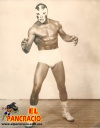 |
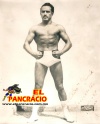 |
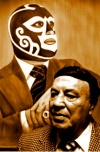 |
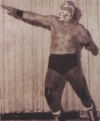 |
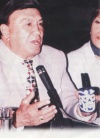 |
 |
 |
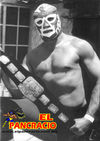 |
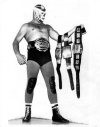 |
 |
 |
 |
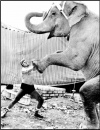 |
 |
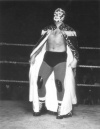 |
 |
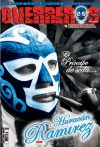 |
 |
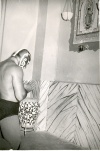 |
 |
 |
 |
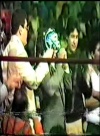 |
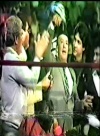 |
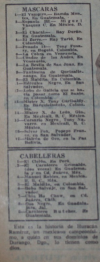 |
 |
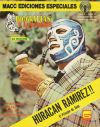 |
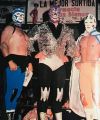 |
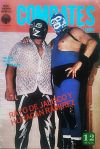 |
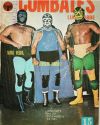 |